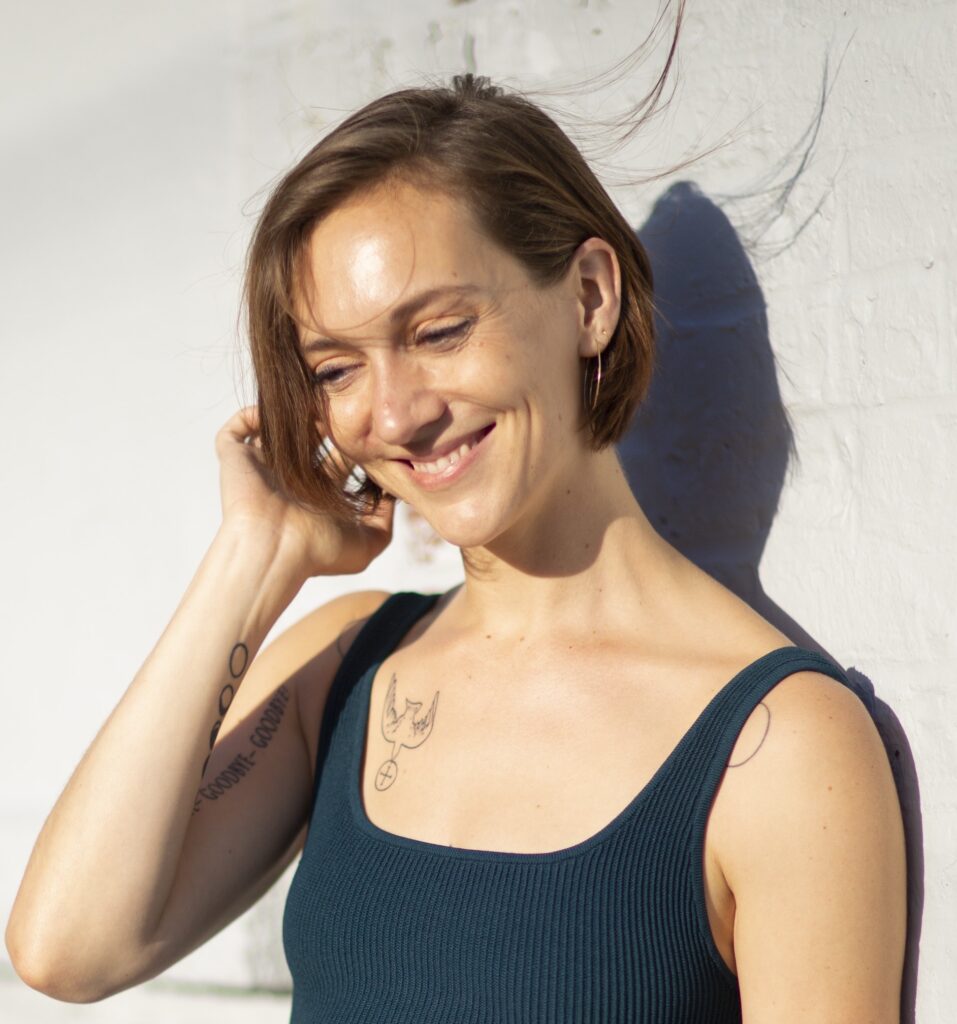
These days, when my Instagram feed isn’t advertising me GLP-1 shots, it is offering me a strange, supposedly unprocessed supplement proclaiming to be “nature’s Ozempic,” or assuming I’m in dire need of a recommendation for a new home based on my astrological chart. Ari Aster’s latest film, Eddington, opens with a man watching an instructional YouTube video on how to convince your partner to have a baby when they don’t want one. The return of early aughts-era emaciation, the rise of natalism and tradwifery, religious devotion to astrology, and heterosexuality on trial: it’s another surreal summer in the discourse swamp.
Women seem to be searching for narratives that promise our bodies exist for a purpose beyond being exploited, surveilled, judged, demonized, or feared. Authors are exploring the claustrophobic yet comforting cages women all too often find themselves strolling into, believing we’re on hero’s journeys only to find ourselves in horror stories as old as time: eating disorders, abusive relationships, religious dogma.
Catherine Lacey wades into the muck and comes out not necessarily baptized, but certainly reborn, in The Mobius Book, her fifth book and first work of hybrid literature. Open the volume from the front and you are faced with a novel, turn it over and upside down and you are reading a memoir. The two texts are placed side-by-side, and can be read in any order. The fiction, formatted as a conversation between two friends in the wake of romantic ruptures in each of their lives, might function as an emotional excavation project for the straightforwardly true nonfiction, which unspools the story of Lacey’s longest romantic entanglement. Together, the texts offer a looping inquisition into the breakdown of said relationship (with a man referred to only as The Reason), her departure from childhood Christianity, and her youthful affliction with anorexia.
Early in the novel, a woman named Edie, in flight from a violent man, spots a pool of suspicious liquid. Seeping from beneath a doorway she isn’t knocking on, it’s not her business, and is probably paint. Besides, women in pain are often taught blood is just another material for art-making. She steps past it and enters one of her oldest friend’s apartments, where the two women spend the evening reflecting on their broken partnerships, spiritual experiences, and fracturing futures, until their conversation collides with the noir unfolding next door. In the true story on the other side of this imagined one, a manipulative man who has just brought a long romantic relationship to a violent end via email is up to his ankles in chicken blood. This is how the narratives in The Mobius Book start, and by the time you reach their endings, you’ll wonder whether that word—ending—holds any water at all. Caught in the text’s current, conversation becomes communion. Relationships erode, reveal, and support the self. The thing about tectonic plates is that, stable as they seem, they eventually collide; groundwater seeps up through the thickest bedrock.
Lacey’s oeuvre is the record of an unorthodox intellect and a slick stuntman; gimmicks are her game. Her last novel, Biography of X, is a fictional biography rife with people who really lived, and her prior books include an illustrated pirate tale and a novel following a broke woman who enrolls in a high-tech “Girlfriend Experiment.” The academic Sianne Ngai considers the gimmick a uniquely capitalist art form: it both mimes and mocks capitalist logic.
If critics have accused The Mobius Book of lacking “narrative stability,” “uninterested in giving us security by way of form,” perhaps that’s because the narrative forms most easily available under a post-Christian capitalist patriarchy are suffocating in their simplicity. Economic logic infects even our most spiritual inquiries. As Lacey herself asks: “After you’re not saved anymore, what are you? Spent?” Gimmicks are frustrating, sure, but they are also fun, not to mention funny, and if anything can save us from our pasts, it’s telling a traumatic story to a friend, painting a wound into a tattoo with wit as your ink.
As Lacey writes in the book, “Symbolism is both hollow and solid, a crutch, but what’s so wrong with needing help to get around?” On the heels of her book’s publication, Lacey called me from her home in Mexico City to discuss crying in public, the improbable potential of asking for help, and the surprising emails she’s been receiving from men.
I’m so thrilled to speak to you about this book—an interview feels like a fascinating lens to consider it through, because in many ways this text feels like an experiment in conversation. There’s a sense of mapping the transcendent possibilities of dialogic exchange. Was that part of the choice to write both fiction and memoir?
That’s such a cool question. I didn’t have a form first; books end up a side effect of whatever I’m living through. I was writing because I needed to, because I was having these conversations. The first chapter of the nonfiction was me realizing [after my breakup], Wow, I have to ask everyone for help. Financially, mental health-wise, logistically, there was no way I could proceed without help. Can I live with you? Can I come to your house right now? I recognized that when you ask somebody for help, you’re telling them you respect them enough to ask them for help. It opened up a way of looking at the world. I started emailing writers I admired, former teachers, people I thought would know what to do. People said, “How about you call me?” So we ended up having phone calls, and it blew my mind. I tried to integrate that, to remain a person open to having conversations from a place of, “I’m confused.”
There’s a growing canon of divorce books, which often jump from the marriage plot into another familiar narrative: motherhood. Children play a different role in your book. They are less wards than role models—eccentric sages, figures in touch with that curiosity rooted in a need for help.
I make a joke—I moved into a couple’s house for a month and lived in their guest room, and now they have a baby. I haven’t even met this baby yet, but I’m like, I am the original baby. You’re my little brother. I actually have this aborted essay, do you remember that “I’m baby” meme?
Well, yes—also, ‘aborted’ is quite the word choice…
It’s true, I’m swimming in psychoanalytic associations, per usual. I am very interested in kids, I babysat a lot growing up. I feel close to several of my friends’ kids. It was always confusing, because I never wanted my own. The state of childhood is this utter wilderness that you never really leave. If you have a kid it’s going to bring you back to that state, and you’re going to have to pretend like you’re in charge.
The novella opens with Edie on the phone: “She says she’s coming over, says it’s urgent, no context.” What a fascinating way to start a novella that will become a memoir, since questions of context haunt both genres. If a novella comprising one conversation could be accused of creating a context vacuum, and memoirs can privilege context over emotional truth, what were you hoping people might take away from putting the two forms back to back?
People that are post-religious in some way, people that have some sort of hunger for religiosity, I hope I can be speaking into that gap, but not to give answers. I hope the same thing for people that have been in controlling, gaslighting relationships. Many books are for somebody that’s trying to make sense of the question, “Why is this man that way?” Who knows? Who cares? I’m interested in the question: how do we get ourselves in situations where we’ve sold our self-worth down the river? Religion, it’s in the same realm. Disordered eating and self-harm are, too; the thing itself is not so interesting. What is interesting is: how did I get in there? What happened to my sense of self worth while I was in there? Honestly, the weird thing is that I’ve heard from a lot of men. I was not expecting that. I have more male readers than the average female novelist, based on the emails I get.
Okay, the literary it-girls are shaking because you’re such a literary guy’s girl.
I’m not saying I don’t want to be read by men. I’ve just been surprised to hear from as many men as I have. Some said, I was in a relationship like that, or I had that experience with religion. To me, it seems like a book about experiences that are more woman-coded. But I recognize the limits of that.
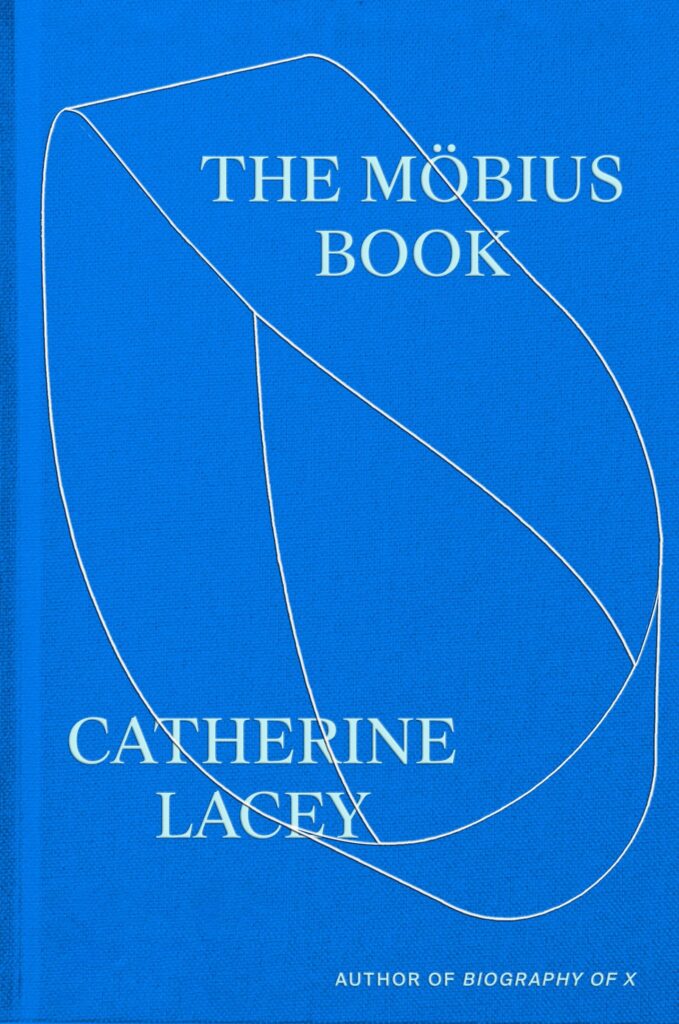
Disordered eating, religion, and heterosexual relationships all offer women an explanation of what our bodies are for in a society where we are often so disembodied. This book recognizes the limits of linguistic communication, and is curious about more bodily forms of conversation—whether that’s a hunger so severe it becomes legible, a visible heterosexual partnership, or ecstatic physical expressions that your body is serving a spirit.
I don’t know how many people of my generation or younger have grown up with the type of religion I grew up in. I don’t think I’ll ever be done writing about post-religiosity, because it’s defined the way I see the world. I’m always operating in the wake of a clear, hard, and fast sense of what I’m supposed to do with my body, what the point of existence is. There’s something about the post-Christian bisexual: How do you make room for or forgive a deviance of your body? I think eating disorders often go hand in hand with queer Christianity. You are raised with a moral conscription about what your body is for, yet you have other things you’d like to do. The next logical mental step for a lot of people is starvation. That’s a way to stamp it out so it’s not a problem, so you can continue down the line of Christian black-and-white thinking.
As much as this book is a project of asking for help, it’s also a project of attending to other people’s pain—the characters in the novella are listening to each other’s breakup stories, and in the memoir, you hear from friends in the throes of addiction and illness. How did you balance those two modes?
I didn’t want any one thing to totally dominate the memoir. I make a color-blocked outline after I’ve written a chunk of something that feels like it is moving towards a book-shaped thought, then I go back and decide to change the lighting. I think line editing is an act of prayer—greasing the sentence so the reader can move through it. You want to be activating thought in the right sequence. It’s musical. When I sit down to write, I am dominating the space, for better or worse. Even when I’m sharing friends’ anecdotes or conversations or listening to what somebody else is saying, I’m still the one pulling the strings. Have you read Sad Tiger [by Neige Sinno]?
Embarrassingly, I have it in my house, but I have not read it yet.
Early on, she breaks the fourth wall and says, “Just because this is life writing, don’t believe that this is my life. It’s completely anecdotal and I’m shaping everything. It’s sculpted.”
Right, there are ways fiction can access certain emotional truths the sculpting required by memoir can obscure.
After I had a full [nonfiction] document, I was really proud of it, but I still had questions. I put it away for almost a year before I wrote the fiction. I thought, Should I take this whole thing and run it through the novel machine of my brain? I had written something that was very personal, but to me, it didn’t have that proscenium of autofiction. It wasn’t happening on a stage, it was happening within me. I knew it was gonna go through a radical transformation if I decided to reprocess the whole thing as fiction, which didn’t feel honest to me. The most important thing about any book is that there’s something within it that means the whole fucking world to the writer. I knew if I did the fiction thing to it, I would lose that.
The memoir ends on a scene of contemporary people cosplaying an old form of communication in service of a hypermodern one: posing in a phone booth for an Instagram. Given your interest in how conversation changes us, and how that change is predicated on the channel of communication, how has seeing this book in the world changed how you might want to reach readers in the future?
It’s made me less interested in writing from life. That’s for damn sure. I have a low tolerance for the ways that people will publicly grapple with a work of memoir that are really fucking lazy. Friends of mine who write from life have told me the same thing—a reviewer will find details about your life online and put that in the review, as if that was in the book. The way the memoir ends, I fell in love. On the other hand, that didn’t seem like the answer to the questions I’m asking in the memoir. An ungenerous reader might see that as a simple story: She got her heart broken and then fell in love again. That’s not the point at all. I’m not even in love again—I’m in love for the first time in a different way that’s related to bisexuality. I end on the fact that I asked my partner a question about the future, about what he would be able to tolerate. There have been reviews where they put in the information [that I’m married] as if, “Oh, she got married again, so who cares?” Other people are like, she wasn’t even married to The Reason. This isn’t even a divorce book. I’m like, “What are you reading for?” I’m fine with people getting things wrong, but it feels different when it’s this personal. I put a different type of myself into this book than I put into novels.
Near the end of the memoir, you and your new partner are reckoning with your language barrier. He speaks Spanish, so you’re learning to communicate in a bodily way that reads as incredibly healing to both your disordered eating and post-religious wounds.
I love that. I’m not just absorbing Spanish, I’m also absorbing Mexican culture and Mexican ways of eating, alongside Mexican slang and standards about noise and public space. How do you interact with strangers? Right now I’ve been able to hear the roving knife sharpener guy’s cart. There’s the colchones guy. I hadn’t made the connection between the fact that I asked this question in Spanish and the way that this language taking up space in my brain is necessarily changing my body, changing the way I relate to everything.
This book is both invested in coincidence and willing to admit how delusional that belief might be—personally, I kept reading the word rupture as rapture—anyway, has anything happened on book tour that clocked to you as a fated coincidence?
There are always crazy coincidences in my life. I’ve been hearing from some of The Reason’s other exes, which was not what I was expecting. But it’s been so cool; they’re fucking great. If any of them read this, please contact me. I want to make an international alliance. We all have the exact same experience.
In another interview, you described marriage as fandom. I thought that that was really interesting in light of the rise of stan culture in secular society.
The archetype I will always love is the wife guy. It’s funny because being a wife guy when you’re 35 is cringey, but being a wife guy at 75 is the dream. I do think that there’s something strange and sacred about trying to wed your consciousness to someone else’s. It’s an endurance sport, a circus sideshow, a psychoanalytic process. If you’re in the right combo, it’s really fucking fun. I’ve never been in a relationship like the one I’m in right now. It is fandom in a way; I am his biggest fan, he is my biggest fan. The challenge is, you have to find a way to not see this person for the 400th time, but to see them for the first time as often as possible. I will say our first date involved splitting a tab of acid. I highly recommend this. If you have a very good feeling about somebody, and they clearly have a very good feeling about you, split a tab of acid, I swear to God.
This is extremely iconic advice, I’ll take that show on the road.
I know I’m not supposed to recommend hard drugs. I have had posts taken down from Instagram because apparently I’m promoting drug use—
This is a magazine for adults. They can make their own decisions. You write about being an adult who is known to cry in public in New York, which I relate to deeply. Where is your favorite place to cry in New York?
It depends on whether you want to be interrupted. If you don’t want to be interrupted, the subway. You need to get into psychoanalysis immediately if you haven’t cried on the subway in New York after living there for more than two years.
I would say two months.
[Laughs] I’m just giving the longest possible range. If you want to be interrupted, Fort Greene Park—somebody will come up to you. If you cry in Marcus Garvey Park, somebody will talk to you. I don’t know if it will be somebody you want to talk to. If you cry in any of the public parks in Greenpoint or Williamsburg, nobody will talk to you. Nobody will even look at you. In Williamsburg, I would not want to be crying.


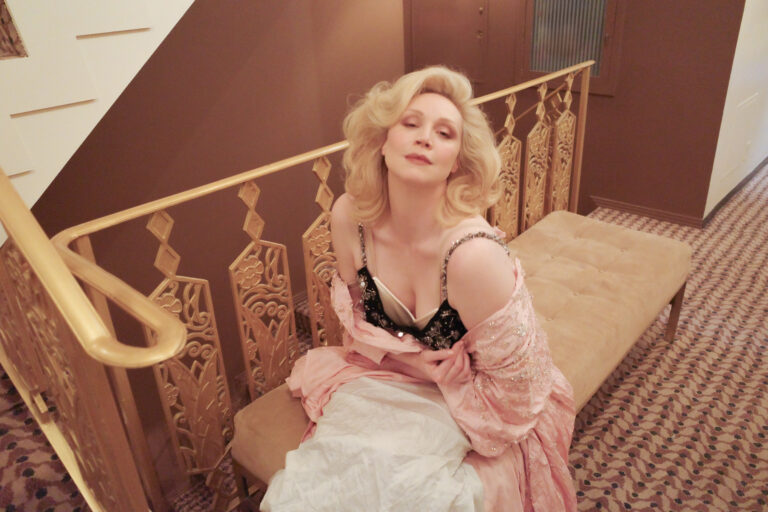
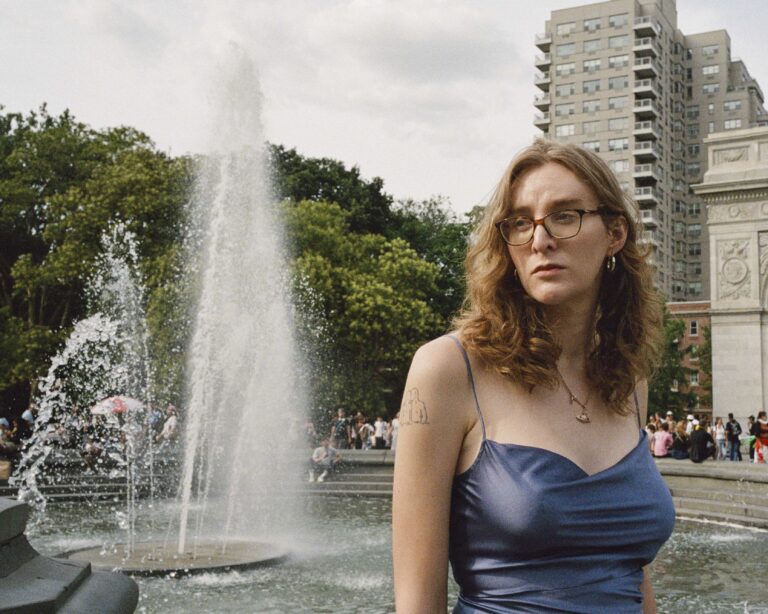
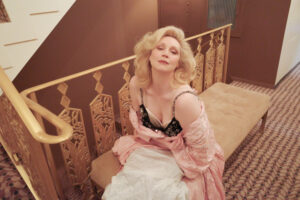




 in your life?
in your life?

